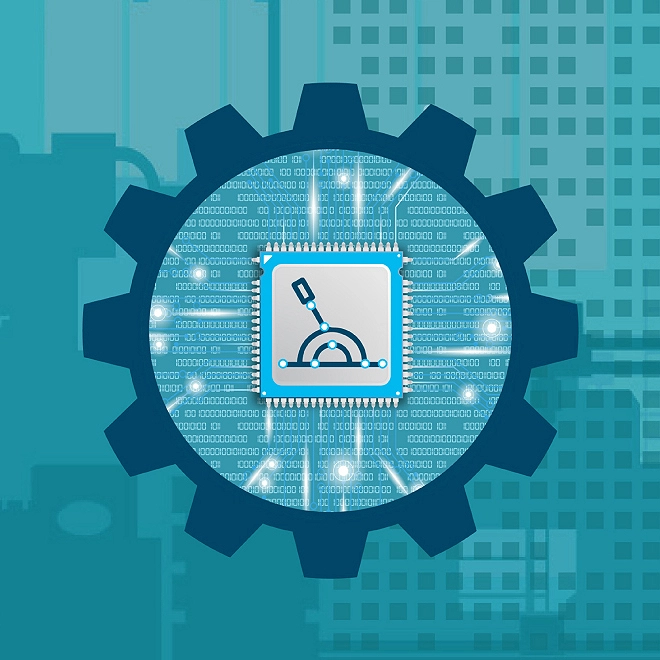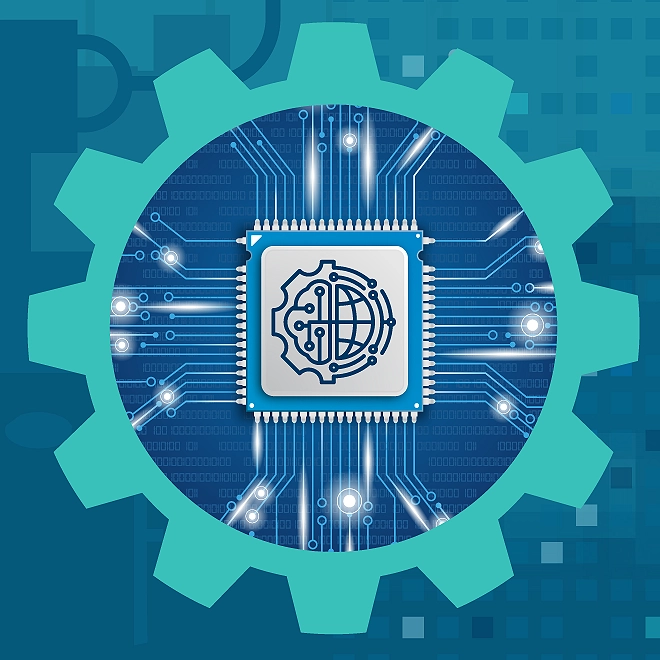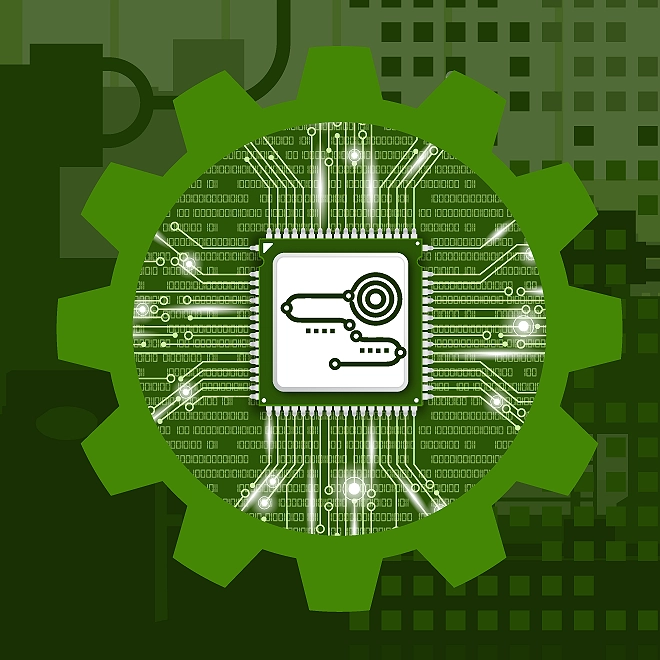Radically transforming your support models
The subscription economy is evolving into an experience-driven outcome economy
IN today’s experience-driven outcome economy, always-on customers are increasingly seeking a dynamic customer engagement model. This shifting expectation affects multiple capabilities in the enterprise—and is having a dramatic impact on the support function. Customers now often expect support to be proactive, and the volume and velocity of support requests is rising, requiring more automated and intelligent support systems and processes.
A large technology company provides a cautionary tale in this space: Leaders moved one of the firm’s key products from on-premises to the cloud. In the first implementation stages, the customer support team was flooded with simple tickets such as password resets, leading to customer frustration. When leaders realized that the move to the cloud had shifted perceptions as well as capabilities, they took action to rewire the company’s support processes, systems, and skills to recover and get on track. A key takeaway: Moving to the cloud demands true customer support transformation.
The first article of our digital industrial transformation series1 explained why and how industrial companies must embed new digital technologies and capabilities in their legacy assets to capitalize on the shift to Industry 4.0. In this installment, we will explore how continuous changes in customer expectations are pushing leaders to take a fresh look at and reimagine the way they transform their support models and experience.
In today’s service-led and continuous engagement model, customer service and support has become the most critical component of customer satisfaction: Two-thirds of customers who switch brands do so because of poor service,2 and analysts predict that in 2020, customer experience—including support experience—is expected to overtake price and product as the key brand differentiator.3 The customer of the future, born into an experience-driven world, will expect an even higher level of differentiated and personalized customer support, one that ensures they get the outcomes they were promised.
For many decades, the customer support function has been the “issue to resolution” function: When a customer has a problem and calls in, the support team works to resolve it as quickly as possible. This mindset needs to make a 180-degree turn—to stay competitive in the experience-driven outcome economy, companies must transform their customer support function’s role to support to advocacy (S2A).
As our cautionary tale illustrates, customer service and support in a traditional industrial model is usually a reactive motion, focusing on operational metrics such as “time to close a ticket” and usually falling short of changes in customer expectations, often resulting in loss of customer lifetime value.4 Shifting to a digital industrial model offers organizations a chance to meet customers where they are by embarking on a support to advocacy journey to learn customer preferences, focus on improving customer-centric metrics, and build personalized, always-on support capabilities.

S2A transformation along the customer life cycle
Despite the alluring opportunities that often accompany Industry 4.0 technologies, a key first step of the support to advocacy transformation is not to evaluate new technology capabilities but, rather, to thoroughly evaluate the enterprise customer base to paint a holistic picture of customer expectations. Success in the experience-driven outcome economy begins with leaders translating the result of this primary research into a customer experience strategy and execution plan across the pre- and post-sales journey through a support lens. In this new world, support’s role begins even before the customer purchases anything (see figure 2).

By walking in their customers’ shoes, companies can truly understand the need behind customer requests. Along their journey, customers want companies to understand them, enable them, work for them, support them, and empower them.
The S2A customer support of tomorrow differs from today’s traditional issue-to-resolution customer support in three main ways:
- Customer support is expanded to the early steps of the customer life cycle (“Understand me” and “Enable me”). In a traditional industrial model, customer support gets involved when something breaks. With the shift to a digital industrial model and the S2A transformation, customer support is no longer only a postsales experience but a function that is integral from the very beginning of the customer journey. For instance, self-help tools must enable customers to customize their solutions on their own.
- A new critical muscle helps solve postsales issues proactively (“Work for me”). Legacy customers are accustomed to opening tickets when they notice an incident and expect companies to react quickly. In the experience-driven outcome economy, customers expect companies to monitor their solution proactively to ensure that outcomes are delivered as promised. This means that companies should automate their monitoring, alerting, and self-healing capabilities so that most incidents are resolved before customers notice them.
- The ticket resolution team is more empathetic and drives toward advocacy (“Support me” and “Empower me”). Increasingly, most customers will be irritated if companies require them to open support tickets themselves for simple glitches. Incident resolution should be fast, efficient, and communicated back to the customer in an empathetic and (if appropriate) apologetic manner. Of course, there will still inevitably be complex incidents tied to specific solution use, and companies should empower customers to open tickets in a quick and convenient way. Ticket resolution gives companies an opportunity to work closely with customers to further understand their needs and strengthen the relationship.
In our 2019 global contact center survey,5 we explore how leaders are responding to rising customer expectations along the customer journey to build strong connections, earn trust, and create loyalty. Fifty-seven percent of contact-center executives surveyed ranked customer experience as a top priority for 2019—higher than controlling cost, accelerating revenue, and branding. As companies focus on elevating the human experience, leaders see customer experience and expectations as the top driver for investment, followed by service improvement, business growth, and competitive pressure.
As an example, a media services provider expanded its support capabilities to the early steps of the customer life cycle to set itself apart in the experience-driven outcome economy:
Starting with the customer in mind. From its inception, the media services company has focused on understanding its customers, aiming to solve the “rabbit-hole problem” in which viewers get bewildered by an overabundance of content. By understanding its viewer preferences, the company became a leader in content personalization.
Building S2A capabilities. The company is investing in machine learning and data mining capabilities to understand customer content preferences and tailor its dashboard with content that is relevant to them. Customers retain easy access to all the content available through a dynamic search capability but are increasingly likely to achieve their desired outcome: watching content they’ll enjoy. The company also identified a gap in customer expectations. By creating feedback loops between customer service teams, corporate strategy teams, and engineering teams, the company redefined its business model to shift from primarily streaming third-party content to creating original content that better met customer expectations.
Support to advocacy design structure: Making S2A transformations happen
Once leaders have a strong grasp on the outcome and experience they want to deliver with their digital industrial transformation, they can look to transform their support capabilities and design new S2A capabilities to support customers through their entire life cycle, and turn them into brand advocates. To be able to achieve this goal, it is critical to align S2A initiatives on a common and connected map that provides rigor and structure.

S2A winning aspiration
Initial steps of the S2A design include defining the scope of the S2A transformation; creating a vision that includes the what, the how, and the why the company is engaging on this transformation journey; and aligning on a set of guiding principles to guide the overall S2A design. Companies can share these winning aspirations broadly with both internal stakeholders and customers to differentiate themselves. For instance, some of the S2A guiding principles that social media consultancy Buffer highlights are “default to transparency,” “show gratitude,” and “improve consistently.”6
The global VP of customer service and support of a US$4 billion Industry 4.0 company explains, “Turning our customers into our biggest advocates is at the core of all our goals across the company. Over the past couple of years, we have been supporting more complex solutions, such as artificial intelligence, and our S2A transformation provides a holistic model to provide a consistent and uniform customer support experience.”
S2A support model
Along the customer life cycle, there are pivotal inflection interactions that a company must handle well to engage the customer and continue down the journey effectively. For each of these engagement points, leaders can choose a mix of process steps, enabling technologies, and functional flows to design a holistic list of enabling S2A capabilities.
Uncovering brand-new S2A capabilities can be challenging for legacy B2B enterprises that have become hamstrung by fresh demand for customization and workarounds, opening the door for more nimble and digital-native startups to recalibrate what customers consider a baseline service level in the Industry 4.0 era. For example, as explained earlier, using a S2A lens, a company has already failed if a customer needs to open a ticket themselves to fix a simple glitch. To successfully engage with customers during this critical engagement point, Buffer, a digital-native company, developed several capabilities:
- Ideally, customers should see themselves as part of the solution. Buffer created an empathetic support team by developing a detailed “tone guide”7 that indicates how to communicate effectively with clients. This guide is reinforced by job titles such as chief happiness officer instead of chief services officer.
- Customers shouldn’t have to open tickets in the first place, so Buffer treats incidents as free consultations to help improve the firm’s product.8 Instead of scaling its support team and heavily investing in self-help capability, Buffer adopted the mindset of always improving its products so that future customers do not encounter past incidents.
There are also examples of large companies that have been intentional about their S2A transformations and have dedicated enough time and resources to be successful. A US$30 billion global enterprise software company realized that customers of its cloud offerings were looking for more visibility into solution performance and were interested in working with the company to improve their solution use. As a result, the company:
- Consolidated its legacy systems into a single, customizable, intuitive customer-facing dashboard that can be set up using predefined personas and then evolve dynamically leveraging AI and machine learning technologies that learn what information are most used by customers
- Grew its user groups and customer boards to actively test new customer service and support capabilities and pricing models
- Involved the customer service and support team early in the development of new offerings to ensure that they would be seamlessly integrated into the customer dashboard
Primary research can suggest how much customers value the new S2A capabilities. While every S2A capability can be implemented, the level of investment in each can be guided by the incremental value customers see in them. Companies also have the option to outsource to partners low-value S2A capabilities such as on-site hardware replacement. These capabilities tend to be either repetitive or highly specialized. Having a clear strategy to leverage channel partner support based on customer segmentation and S2A capability value can result in significant cost savings.
Companies are also likely to have existing capabilities that can be adapted, expanded, and connected holistically to become a starting point of the S2A support model. For example, a company with strong internal troubleshooting and knowledge tools can adapt them to be available externally and become partner and customer self-help tools.
S2A engagement model
As leaders group S2A capabilities into an actionable road map, it will become apparent that even though those capabilities’ focus is customer support, other teams—services, customer success, sales and marketing, engineering, and IT—will need to be involved and might even lead a transformation initiative.
For instance:
- To provide a seamless experience to customers, managed services and professional services should communicate what troubleshooting activities have already been performed before escalating to customer service and support.
- To proactively optimize customer support dashboards, customer success should understand how customers are handling incidents and how they reach out for help. Our previous article on customer-centric digital transformation9 explains in detail how leaders can develop customer success capabilities that are complementary to the S2A capabilities this article describes.
- To tailor a solution to customer preferences, sales and marketing should understand how customers will use their offering after purchasing it.
- To continuously improve offerings so that customers notice fewer and fewer incidents, engineering should properly prioritize support improvement requests.
- To accelerate the response time of the teams above, IT should help integrate the various tools used to track support activities and customer feedback.
Finally, companies should look for opportunities throughout their digital industrial transformation to help simplify the existing organization by eliminating skills redundancies and potentially consolidating offices across geographies. Clear near-shoring and outsourcing strategies should also come out of the S2A transformation.
S2A enablement
Companies risk being anchored by their current state, stuck making small incremental changes. Chances are, some S2A initiatives will be quick wins by leveraging existing resources, while others will require exponential changes and enterprisewide investment to meet customer expectations.
Among the emerging capabilities in which contact center leaders intend to invest over the next two years, AI and process automation are at the top of the list.10 While AI is still in its infancy, more than half of companies surveyed are already piloting or testing AI capabilities to assist agents and deploy virtual chatbots. Our previous article, on XaaS transformation execution, offers an in-depth case study on going through this enablement step.11
S2A culture and change adoption
In our series’ first article,12 we described the mindset necessary to engage on a digital industrial transformation and be able to win in an Industry 4.0 era. Two major culture shifts are specifically necessary to not only design the right S2A capabilities but to enable the success of a transformation implementation. The first one is the shift to a more empathetic customer service and support team. Customer service and support representatives work with clients every day, but if their metrics are only operational, chances are they do not regularly strive to understand what customers are experiencing throughout their journey with the company. Having an empathetic team promotes a customer-first culture that enables the design and execution of S2A capabilities. Mapping the customer journey on the customer life cycle can also help customer service and support representatives put themselves in their customers’ shoes, and can be the start of the culture shift.
The second necessary shift is to create a culture of collaboration and transparency between teams. For customers to have a seamless experience, every team needs to know not only its role but also the role of and actions taken by other teams. For example, an incident escalated to the customer support team should clearly indicate how the managed services team already tried to fix the issue. Large companies can have siloed systems for different teams. Agreeing on a single view of the customer and their journey is key to a S2A-grade collaboration between teams.
Conclusion
An effective support to advocacy transformation involves understanding that incremental changes from legacy industrial business models are insufficient to provide a satisfactory customer support experience and win in an Industry 4.0 environment. Leaders need to aim for exponential change activated by a comprehensive design of the support function.
In parallel to the S2A transformation, leaders should look to conduct a bottom-up assessment of existing capabilities and services to meet in the middle with the top-down S2A design and result in a clear and actionable S2A road map. This is an exercise that requires both art and science, but that can deliver considerable benefits to companies when executed properly. In our experience, many companies that went through S2A-type transformations were able to:
- Improve customer retention value by customizing offerings to customer segments
- Improve customer satisfaction by accelerating responses to critical queries
- Create new differentiated services by investing in highly skilled resources that increase the use customers make of business-critical offerings
In the experience-driven outcome economy, companies that engage in an S2A transformation can not only keep up with their customer expectations but set themselves apart from their competition in Industry 4.0.
Digital Transformation
Deloitte Consulting LLP’s digital transformation practice has advised clients in the technology sector (e.g., hardware, software, and semiconductors) as well as those in the industrial sector (e.g., manufacturing, construction, and energy) on how to enter and compete in new markets. Our work includes defining customer-first strategies, building new business and operating models, and launching the critical capabilities required to swiftly drive scale—all to achieve optimal results from limited resource pools.
Learn more


